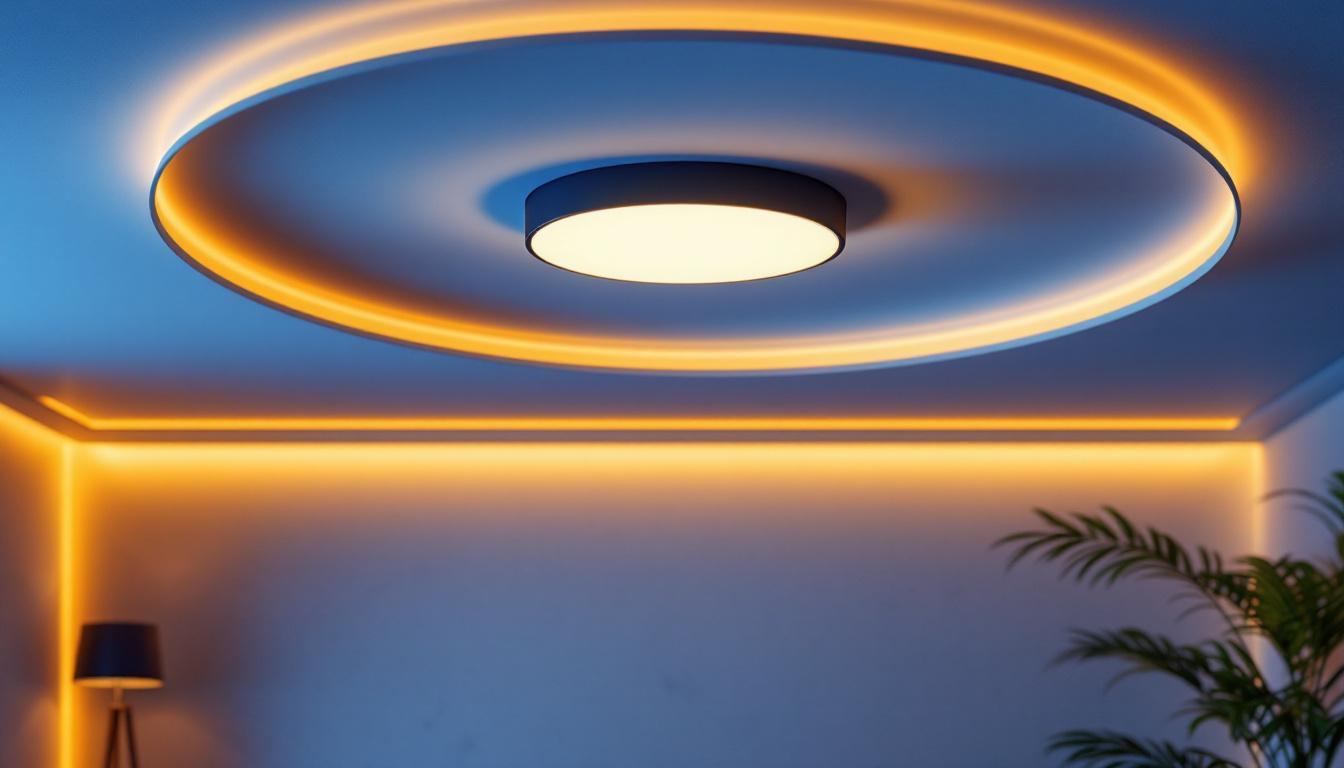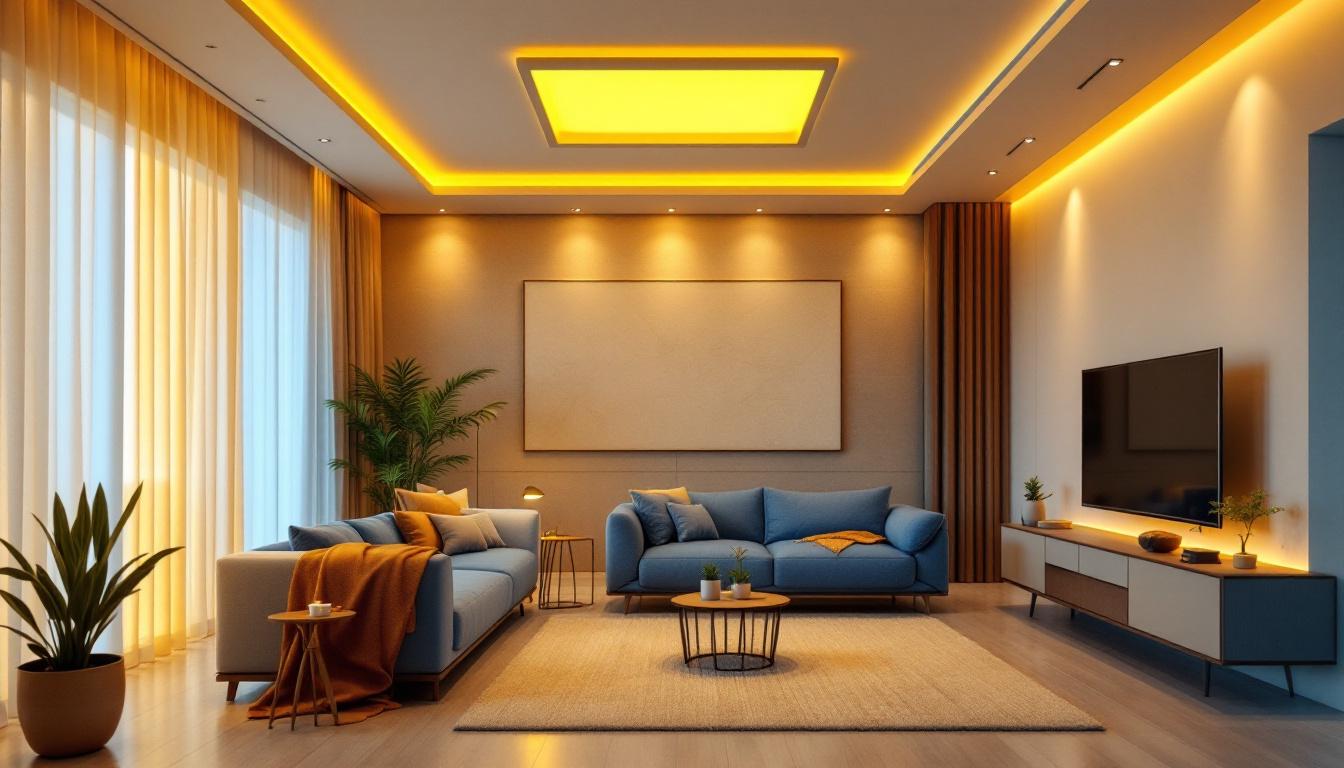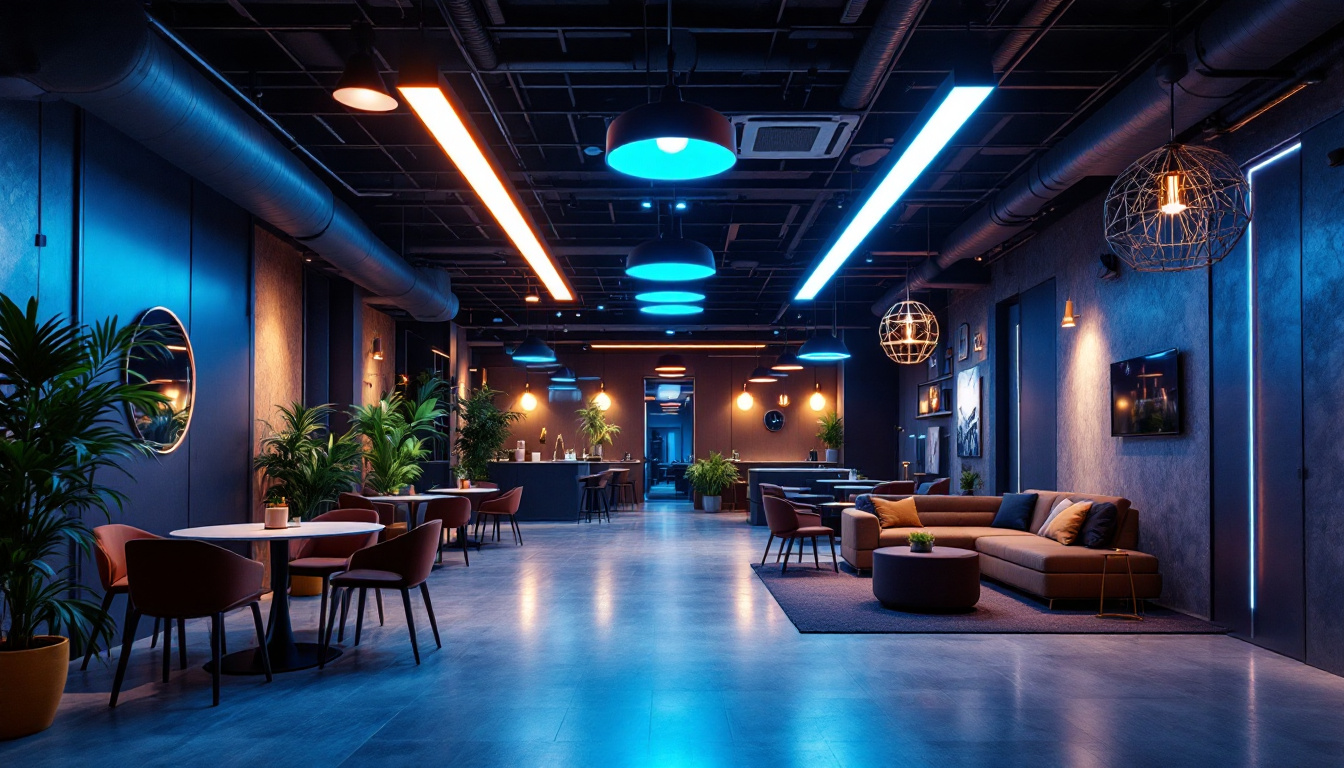
As the world of interior design continues to evolve, lighting remains a critical element in creating the right ambiance and functionality in any space. For lighting contractors, understanding the nuances of different lighting fixtures is essential. Among the various options available, round lights for ceilings stand out due to their versatility and aesthetic appeal. This article delves into what every lighting contractor should know about round ceiling lights, covering their types, installation tips, and design considerations.
Round ceiling lights are fixtures that provide a broad distribution of light while adding a decorative element to the ceiling. They come in various styles, sizes, and technologies, making them suitable for different applications. Whether it’s for residential, commercial, or industrial settings, round lights can enhance the overall lighting design. Their versatility allows them to blend seamlessly into various environments, from cozy living rooms to bustling office spaces, making them a popular choice among designers and homeowners alike.
There are several types of round ceiling lights, each serving different purposes and aesthetics. The most common types include:
Each type of round ceiling light has its advantages and ideal applications. Understanding these differences allows contractors to recommend the best options based on the client’s needs and preferences. For instance, flush mount lights are often favored in hallways and bathrooms where space is limited, while pendant lights can add a touch of elegance over dining tables or kitchen islands. The choice of materials, such as glass, metal, or acrylic, can also influence the ambiance of the space, making it essential to consider both functionality and aesthetics.
When selecting round ceiling lights, size and style are crucial factors. The size of the fixture should be proportional to the room dimensions. A small light may get lost in a large room, while an oversized fixture can overwhelm a compact space. A general rule of thumb is to add the room’s dimensions in feet and use that sum to determine the diameter of the light fixture in inches. For example, a room that is 10 feet by 12 feet would ideally have a fixture that is around 22 inches in diameter.
Style also plays a significant role in the overall design scheme. From modern and minimalist to vintage and ornate, the right style can complement the existing decor and enhance the room’s character. Lighting contractors should consider the architectural features of the space and the client’s personal taste when making recommendations. For instance, a sleek, chrome flush mount light may suit a contemporary kitchen, while a rustic pendant light with a distressed finish could enhance the charm of a farmhouse dining area. Additionally, incorporating dimmable options can provide flexibility in mood setting, allowing spaces to transition from bright and functional to warm and inviting with ease.
Proper installation is key to ensuring that round ceiling lights function effectively and safely. Lighting contractors must be well-versed in the installation process, including electrical considerations and mounting techniques.
Before installation, it’s essential to assess the electrical requirements for the chosen fixtures. Round ceiling lights may require different wattages and voltage levels, depending on their type and design. Contractors should ensure that the existing wiring can support the new fixtures, and if necessary, upgrade the electrical system to meet safety standards.
Additionally, understanding the type of bulbs compatible with the fixtures is crucial. LED, incandescent, and fluorescent bulbs have different energy requirements and lifespans, which can impact the overall performance of the lighting system. For instance, LED bulbs are not only energy-efficient but also have a longer lifespan, which can lead to significant cost savings over time. It’s also important to consider the color temperature of the bulbs, as this can affect the ambiance of the space. Warmer tones may create a cozy atmosphere, while cooler tones can enhance focus and productivity in work areas.
Mounting techniques vary based on the type of round ceiling light being installed. Flush mount lights typically require a simple bracket and screws, while recessed lights may need a more complex installation involving cutting into the ceiling and securing the housing.
For pendant lights, it’s important to consider the height at which they will hang. The ideal height often depends on the room’s purpose; for example, pendant lights over a dining table should be hung lower to create an intimate atmosphere, while those in a hallway should be positioned higher to avoid obstruction. Furthermore, the choice of mounting hardware is equally significant; using the right anchors and screws will ensure that the fixtures are securely attached and can withstand any vibrations or movements over time. It’s also advisable to check local building codes and regulations, as they may dictate specific requirements for mounting fixtures in various types of ceilings, such as drywall or plaster. Proper attention to these details not only enhances safety but also contributes to the overall aesthetic appeal of the lighting design.
Designing a lighting scheme that incorporates round ceiling lights requires a thoughtful approach. The goal is to achieve a balance between functionality and aesthetics, ensuring that the lighting enhances the space rather than detracts from it. The choice of fixtures, their placement, and the type of bulbs used can significantly influence the overall ambiance of a room, making it essential to consider these elements carefully during the design process.
Effective lighting design often involves layering different types of light sources. Round ceiling lights can serve as the primary ambient lighting, but they can be complemented with task and accent lighting for a more dynamic effect. For instance, using recessed lights in conjunction with pendant fixtures can create a well-lit environment that is both functional and visually appealing. This layering technique not only provides adequate illumination for various activities but also adds depth and character to the space.
Lighting contractors should encourage clients to consider how different light sources interact. The combination of warm and cool tones can create depth and interest, while the strategic placement of fixtures can highlight architectural features or artwork. Additionally, the use of dimmers can enhance this effect, allowing for adjustable lighting that can shift the mood of a room from bright and energetic to soft and intimate, depending on the occasion. By thoughtfully integrating different lighting elements, designers can craft a harmonious environment that caters to both practical needs and aesthetic desires.
As sustainability becomes increasingly important in design, lighting contractors should prioritize energy-efficient options. LED round ceiling lights are an excellent choice, as they consume less energy and have a longer lifespan compared to traditional bulbs. These lights not only reduce electricity bills but also minimize the frequency of replacements, contributing to less waste and a lower environmental impact.
Contractors should also educate clients on the benefits of smart lighting systems, which allow for greater control over lighting levels and can contribute to energy savings. Integrating technology into lighting design not only enhances convenience but also aligns with modern sustainability goals. Smart systems can be programmed to adjust automatically based on the time of day or occupancy, ensuring that lights are only used when necessary. Furthermore, incorporating natural light through strategically placed windows or skylights can complement artificial lighting, creating a more energy-efficient and inviting atmosphere. This holistic approach to lighting design not only meets the needs of the present but also considers the ecological footprint for future generations.
While installing round ceiling lights can be straightforward, several common challenges may arise. Being prepared with solutions can help contractors navigate these issues effectively.
One of the most frequent challenges is achieving even lighting throughout the space. Poor placement of fixtures can lead to dark spots or overly bright areas. To combat this, contractors should carefully plan the layout of round ceiling lights, considering the room’s dimensions and the distribution of light.
Using a combination of different types of fixtures can also help achieve a balanced lighting effect. For instance, supplementing round ceiling lights with wall sconces or floor lamps can fill in any gaps in illumination.
Another challenge is the maintenance of round ceiling lights, particularly in hard-to-reach areas. Contractors should inform clients about the importance of regular cleaning and bulb replacement to ensure optimal performance.
Choosing fixtures that are easy to clean and maintain can alleviate some of these concerns. For instance, fixtures with removable shades or those that are designed to minimize dust accumulation can simplify upkeep.
Round ceiling lights are a versatile and stylish choice for various applications, making them a staple in the lighting contractor’s toolkit. Understanding the types, installation considerations, and design implications of these fixtures is essential for delivering quality service to clients.
By staying informed about the latest trends and technologies in lighting, contractors can provide valuable insights and recommendations that enhance their clients’ spaces. Whether it’s through energy-efficient solutions or innovative designs, the role of a lighting contractor goes beyond installation—it’s about creating environments that inspire and elevate everyday experiences.
As the demand for quality lighting solutions continues to grow, mastering the art of round ceiling lights will undoubtedly set contractors apart in a competitive market. Embracing this knowledge not only benefits the contractor but also enriches the lives of those who inhabit the spaces they illuminate.
Ready to elevate your lighting projects with the finest round ceiling lights on the market? Look no further than LumenWholesale, where we provide lighting contractors with exceptional, spec-grade lighting solutions at prices that can’t be beaten. Say goodbye to unnecessary markups and hello to a vast selection of premium lighting that meets rigorous industry standards. With free shipping on bulk orders, LumenWholesale is your go-to source for quality, affordability, and convenience. Don’t compromise on your lighting needs—choose LumenWholesale for Wholesale Lighting at the Best Value and make every space shine.

Discover how square recessed lights can transform your home’s energy efficiency.

Discover the cutting-edge strategies lighting contractors use to implement automatic light sensors effectively.

Discover effective strategies for training your team in the installation and maintenance of large outdoor solar lights.

Discover the transformative power of cool LED lights with insights from top lighting contractors.